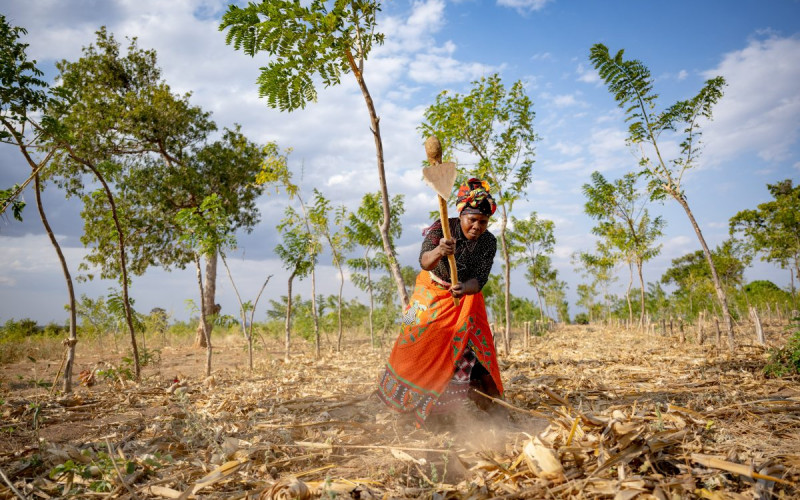The transport sector is estimated to contribute an average of 17% of global greenhouse gas emissions from fossil fuel combustion in the Southern African Development Community (SADC). Member states, therefore, urgently need to accelerate the adoption of electric vehicles (EVs), which include four, three and two wheelers.
Zimbabwe, in particular, stands out as a market with potential to lead this e-Mobility transition due to its previous automotive industry track record of manufacturing and assembling. Leveraging the potential of electric vehicles and micromobility (three, two and one wheelers) would ideally reduce the cost of transportation of goods as part of the broader green and circular economy. This would signify a just transition to a more sustainable environmental landscape, which could help kick-start Zimbabwe’s ailing economy.
While strict new emission laws and policies have driven the uptake of EVs in Europe and China, the main incentive for Zimbabwe is economic growth. The services sector has consistently been the largest contributor to Zimbabwe’s GDP at just over 62%, according to the 2019 AFDB Zimbabwe Infrastructure Report . Retail, trade and repair of motor vehicles and motorcycles constitute a major portion of this sector. The country is therefore well placed for an e-Mobility transition.
Rapid de-industrialisation during the previous decades has meant that Zimbabwe’s reliance on imported goods has grown significantly, resulting in a large current account deficit. A ballooning import bill has led to an acute shortage of foreign currency, which continues to hamper critical imports such as petrol and diesel.
The motor vehicle retail industry in Zimbabwe is dominated by second-hand vehicle imports. Used vehicle imports jumped almost five-fold from just over 17,000 units per year in 2007 to over 75,000 in 2014. This figure has been averaging around 60,000 units annually since, and has consequently raised demand for petrol and diesel imports.
Petrol and diesel imports account for 30% of Zimbabwe’s total import bill, with US$1.2 billion spent annually on fuel imports. Additional foreign currency is spent on importing spare Internal Combustion Engine vehicle parts and lubricants. Zimbabwe also has the most expensive petrol and diesel in the SADC region. The high fuel prices have a significant impact on the cost of doing business and reduces the competitiveness of locally produced goods. A shift to e-Mobility can help to address this problem.
EVs: a solution to Zimbabwe’s public transport crisis?
The public transportation system in Zimbabwe is dominated by 15-seater minibuses commonly known as ‘kombis’. They make up the bulk of public passenger transport service providers in urban areas and their operations are best described as highly fragmented. Operators in this industry do not observe fixed route structures or scheduled timetables, opting instead to move once they get a full load or a critical mass of passengers during off-peak times. During peak times, routes are often underserved, leaving commuters to queue for hours. These inefficiencies have resulted in the growth of the pirate taxi industry, where small passenger cars operate illegally as unregistered taxis.
An opportunity exists to formalise the pirate taxi industry and simultaneously improve the quality of service. Small city EVs for ride-sharing programmes and electric mass transit options such as high-capacity buses could be a solution to the public transport crisis. For short-haul urban city commutes, adapting a model from China’s successful Low Speed Electric Vehicle programme could help address high operating costs. China’s affordable city EVs such as the Wuling mini EV and the Changan BenBen E-Star could be introduced to replace the large contingent of pirate taxis that dominate urban short-haul routes.
A strategic sectorial approach towards electrification would be viable for Zimbabwe. Fleet managers in the mining, academic, logistic, tourism and agricultural sectors are generally in a position to afford new electric vehicle models and have periodic fleet replacement cycles that could be exploited. They offer an opportunity for high volume orders, further incentivising original equipment manufacturers and their dealerships. This lowers barriers to adoption by removing the funding burden from central government. Predetermined or set routes of a known distance allow fleet operators to easily adopt electric vehicles without disrupting their normal operations, as well as scheduling charging sessions using onsite EV charging points.
Unlocking synergies
Recent advances in technology mean that opportunities also exist to electrify heavy-duty mining equipment, as well as underground mining equipment, thereby improving air quality and safety in the mining sector. Onsite solar photovoltaic plants for self-consumption are helping firms mitigate the effects of crippling power shortages brought on by constrained generation capacity at the national utility’s generation plants. Unlocking the synergies between distributed energy generation and electric vehicles will be mutually beneficial.
Zimbabwe has recently adopted progressive policies to encourage the uptake of renewable energy such as net metering . This will go a long way towards encouraging several innovations and applications in smarter mobility and smart cities such as vehicle-to-grid and vehicle-to-home systems. Private investments into electricity generation can then bridge the current energy generation gap.
Leveraging the booming EV market could also positively assist battery production, which is predicted to reach 800 GWh in 2025, from around 210 GWh this year. One of the most important battery cathode materials, nickel, has already started to experience growth in output in Zimbabwe. The average capacity utilisation across the mining industry increased from 71% in 2017 to 75% in 2018, whereas utilisation levels for nickel specifically increased from 60% to 70%.
This presents an opportunity for participation in a shift towards an industrialised regional economy that sustainably exploits its natural resources, while also leveraging science and technology innovations. Subsequently, this holds significant potential to enhance overall technological capabilities in member states, in line with SADC’s Regional Green Economy Strategy and Action Plan for Sustainable Development and the SADC Regional Indicative Strategic Development Plan 2020-2030.







